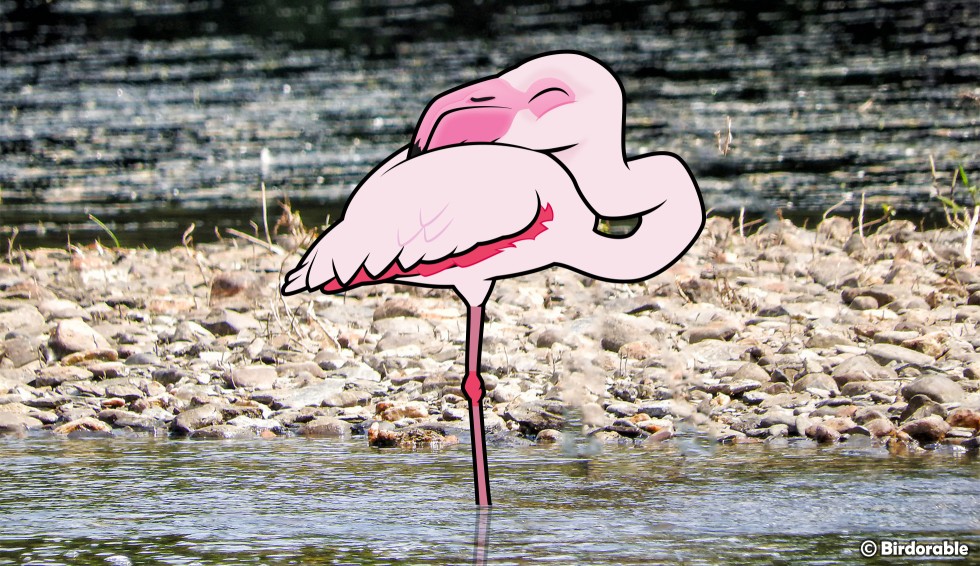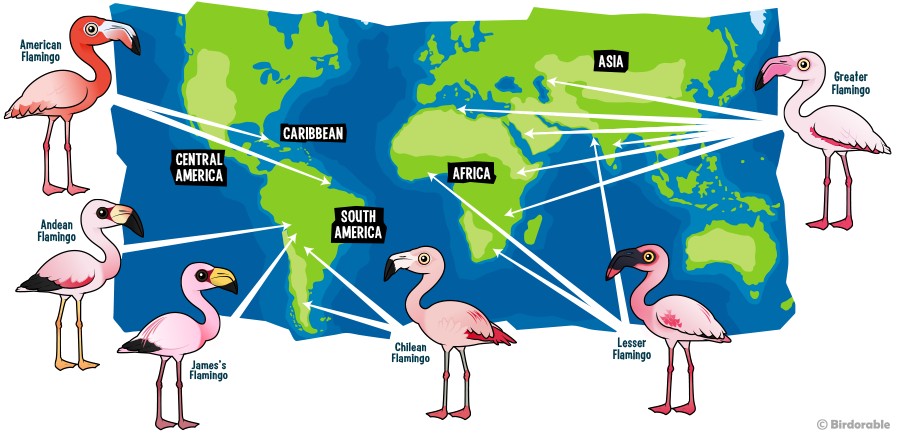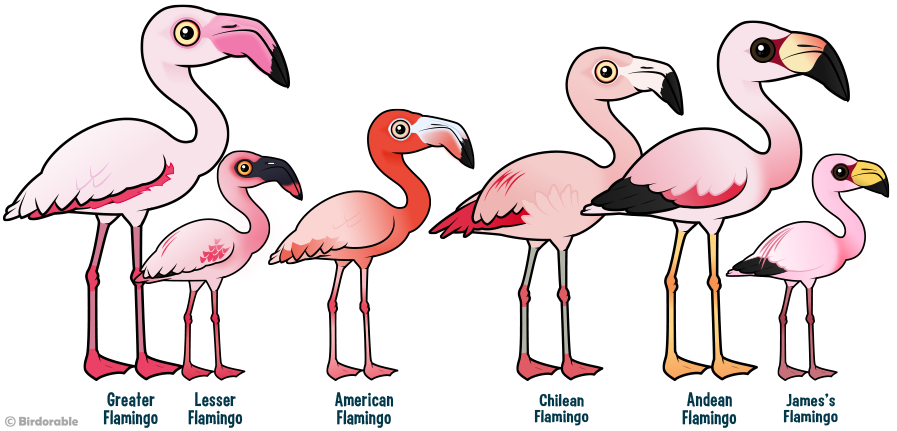Flamingo FAQs
We're celebrating flamingos this week! Let's learn about these pink beauties -- here are some frequently asked questions about flamingos.
Why do flamingos stand on one leg?
The true reason that flamingos often stand one leg has long been debated. One popular theory is that a bird can conserve body temperature by tucking one leg into its feathers while standing in water, which may pull heat away from the body. Another theory has to do with the fact that flamingos are able to "shut down" half of their brain so they can both rest and remain vigilant for predators at the same time. The tucked-in leg is a kind of natural reaction to this state of partial sleep.

Greater Flamingo
Why are flamingos pink?
Flamingos hatch out of the egg grey, not pink. As they grow, they develop a pink plumage which is the result of natural pink pigments found in the food they eat. The pink or reddish plumage comes from carotenoids in the diet of both animals and plant plankton. The brightness of a bird's plumage relates to diet and the ratio of algae (darker/more pink plumage) consumed compared to small animals (more pale plumage).
Where do flamingos live?
Of the six flamingo species, 4 live in the New World and 2 are found in the Old World.
The American Flamingo is the only species naturally occurring in North America. They are mostly found in the Caribbean, Central America, and along the northeastern coast of South America. There is a population on the Galapagos as well.
Chilean Flamingos are found along the western side of much of South America. Andean and James's Flamingos have a smaller range near the western coast along the Andes mountains.
Of the Old World flamingos, the Lesser is found in coastal and wetland habitats across sub-Saharan Africa, with a separate population in western India. The Greater Flamingo is found around sub-Saharan Africa as well as in coastal habitats in parts of the Middle East, southwestern Asia, and southern Europe.

What is the meaning of the name "flamingo"?
The word flamingo is derived from the Portuguese flamengo or the Spanish flamenco, which means "flame-colored". The origin of the word comes from the old idea that Flemish people had a ruddy or reddish complexion.
Do flamingos migrate?
Most flamingo species will migrate short distances during the year depending on availability of food and conditions of feeding grounds. Flooded habitat may be too deep for feeding; drought conditions may cause flamingos to move to a more favorable location for a season or longer.
How can you tell the different flamingo species apart?
Flamingos all have the same general body shape, unique beak formation, long legs, and pink or pinkish plumage. How can you tell them apart? Pay attention to their size, and the color of the bill and the legs. Here are some simple tips.
- The Andean Flamingo is the only species with yellow legs.
- The Chilean Flamingo has grey legs with pink "knees" and feet.
- James's Flamingo has a mostly yellow bill, distinguished from the Andean by leg color (pink versus yellow).
- The Lesser Flamingo is the only species to have a mostly black bill.
- The Greater Flamingo is the largest of the bunch and has the most pink bill.
- That leaves the American Flamingo, typically the darkest species, with its pink color sometimes appearing salmon.

Did you know all of these Flamingo FAQs? Stay tuned to our blog to learn more about these birds as Flamingo Week continues on Birdorable!













Comments
Leave a comment
Thank you!